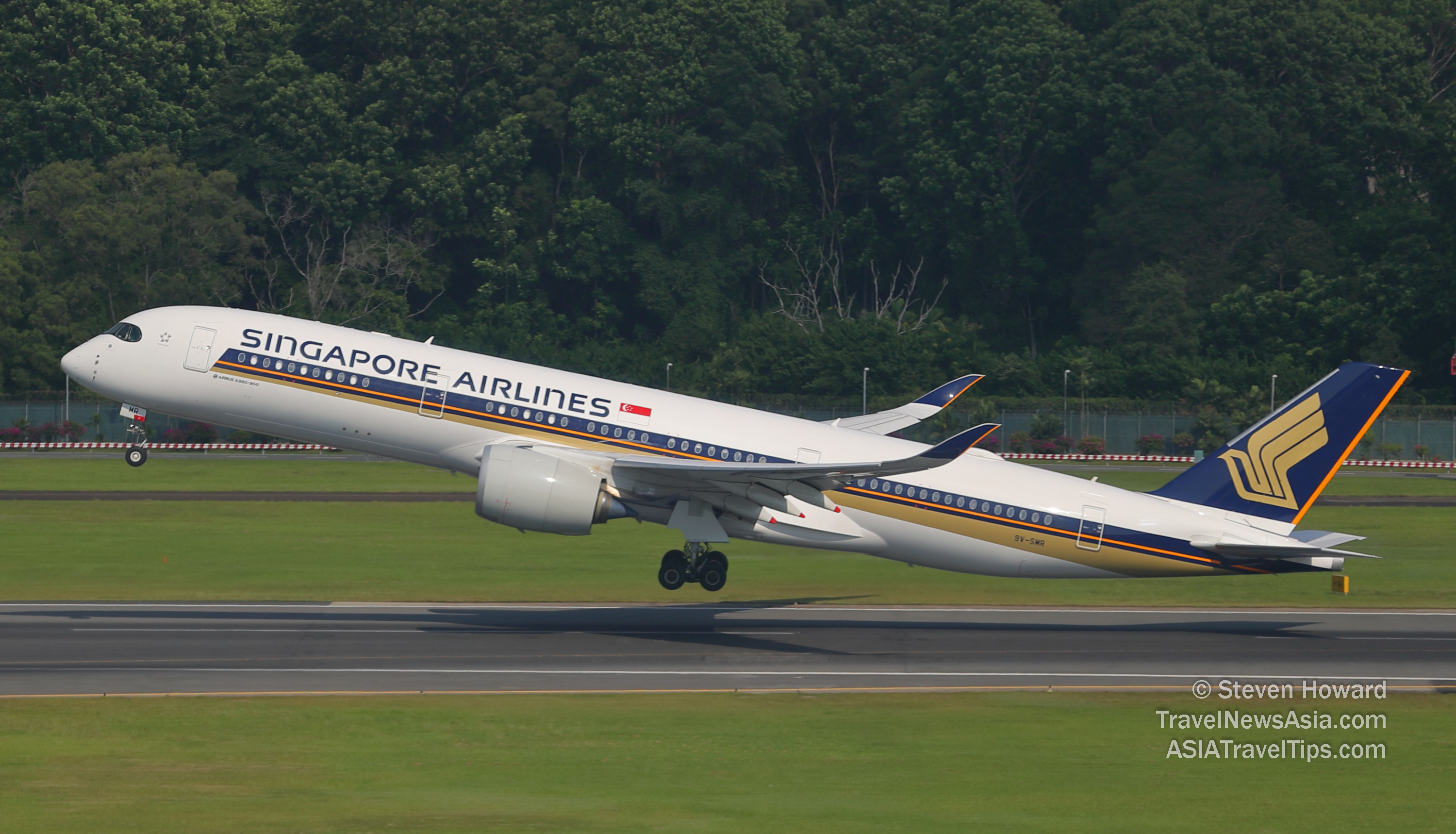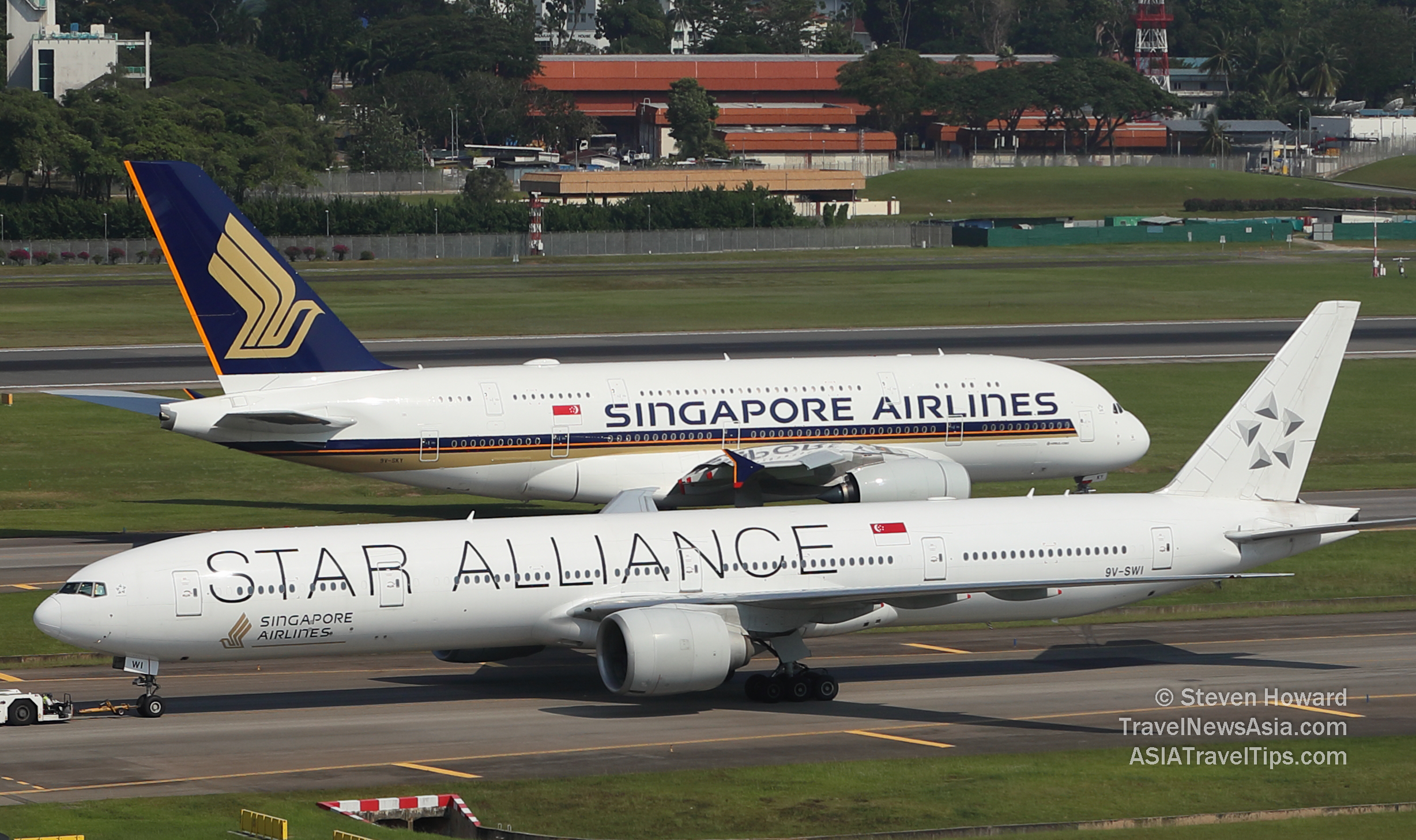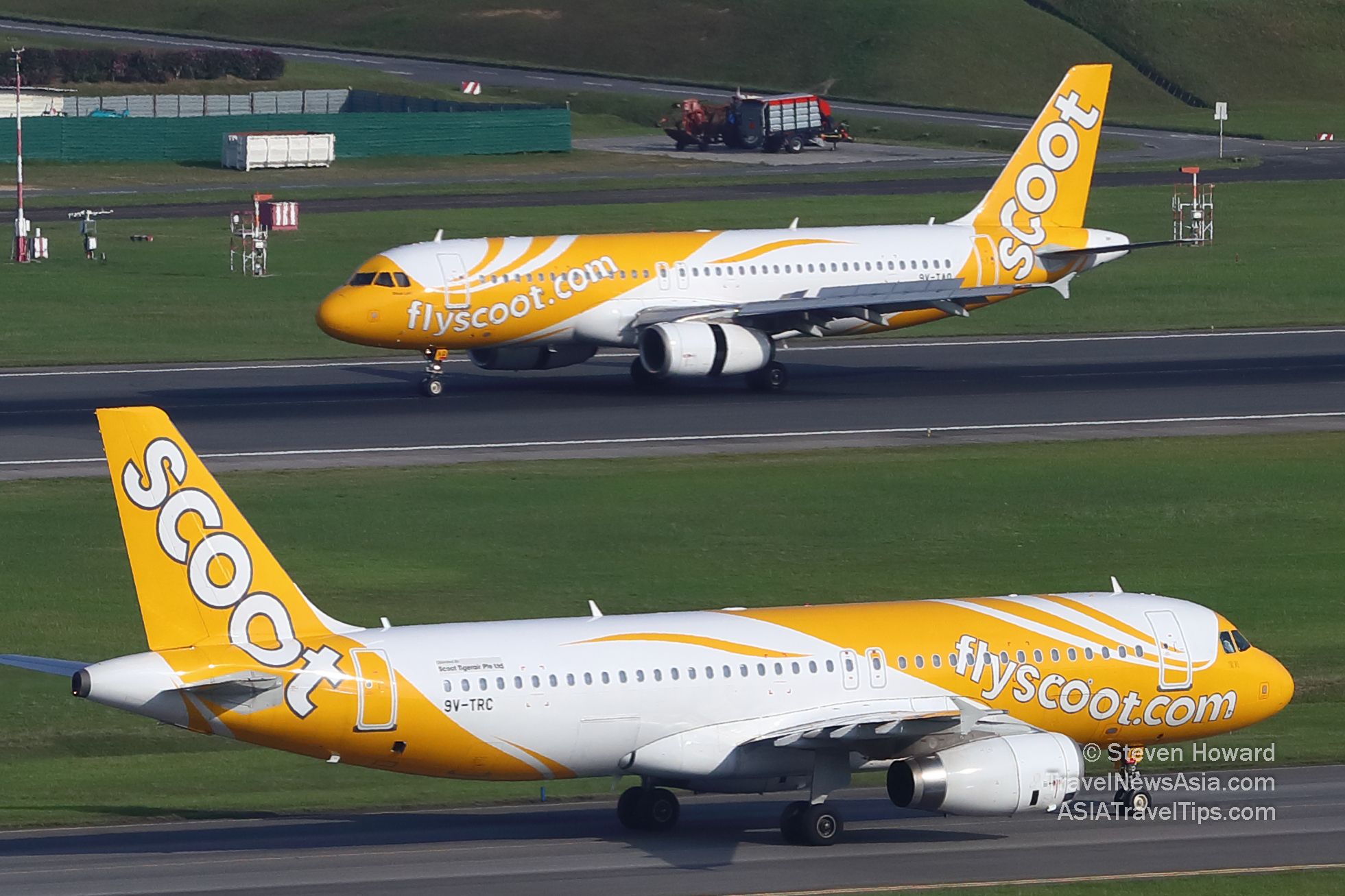|
The SIA Group reported an operating profit of
$200 million in the April-June 2019 quarter, $7 million or 3.6%
higher compared to the same period last year. Growth in group
revenue of $258 million outpaced the $251 million rise in
expenditure.
Group revenue amounted to $4,102 million, a 6.7%
gain year-on-year. Flown revenue was up $226 million (+6.3%), with
passenger flown revenue improving $271 million (+8.8%), led by
traffic growth of 8.1%, on a 6.6% increase in capacity. Despite
the significant capacity injection, RASK (revenue per available
seat-kilometre) improved 1.3%. Cargo flown revenue declined $45
million (-8.4%), as both cargo yield and cargo load factor fell by
4.2% and 2.7 percentage points respectively due to weak cargo
demand amid trade uncertainties.
Expenditure for the group
increased $251 million (+6.9%) to $3,902 million. Ex-fuel costs
rose by $157 million (+6.1%), in line with the capacity increase.
Net fuel cost rose $94 million, led by an increase in volume
uplifted (+5.9% or $70 million) on capacity expansion, and a
stronger US dollar (+$33 million).

Group net
profit for the quarter was $111 million, down $29 million or 20.7%
from last year. The reduction was largely attributable to a higher
share of losses from associated companies (-$31 million), as an
improvement in Vistara�s performance was offset by higher
estimated losses from Virgin Australia. Net finance
charges also increased (-$26 million) due to the recognition of
interest expense arising from lease liabilities following the
adoption of IFRS 16 Leases , and additional financing for fleet
renewal and growth. These were partially alleviated by an
improvement in group operating profit (+$7 million), a higher
share of profit from joint venture companies (+$9 million) and
lower provision for taxation (+$8 million).
Operating
profit for the Parent Airline Company increased $51 million to
$232 million, as strong revenue growth outpaced higher expenditure. The year-on-year increase in revenue of $250 million
was mainly attributable to robust growth in passenger flown revenue (+$258 million). The higher passenger flown revenue was
driven by a 9.0% increase in passenger traffic (measured in revenue passenger kilometres). Passenger load factor rose 1.2
percentage points to 83.2%, the highest on record for the first
quarter, notwithstanding the capacity growth of 7.4% (measured in
available seat-kilometres). RASK improved 2.4%, or 4.9% on a constant currency basis. Expenditure was up $199 million (+6.8%).
Ex-fuel costs increased $118 million (+5.8%), attributable largely
to the growth in passenger capacity. Net fuel cost also rose, by
$81 million (+9.2%), largely due to a higher volume uplifted
(+6.2%) and a stronger US dollar.
SilkAir was
significantly impacted by the grounding of its six Boeing 737 MAX 8
aircraft during the period. Measures have been taken to mitigate
the effects, however, which contained the reduction in capacity to
1.6%. This capacity reduction, together with a 2.9% yield
contraction, contributed to a $10 million decline in revenue.
Passenger load factor rose on the back of 2.4% traffic growth,
driving a 1.3% improvement in unit revenues (RASK). Expenditure
rose $6 million (+2.5%), primarily due to costs related to the MAX
8 grounding. Consequently, an operating loss of $16 million was
recorded by SilkAir for the quarter, against a marginal profit of
$0.2 million in the same period last year.

Scoot�s
operating performance also reversed from last year�s operating
profit of $1 million to a loss of $37 million this year. Scoot
proactively reduced aircraft utilisation during the period to
improve operational resilience, and has recorded improvements in
its on time performance. As a result, capacity growth was
restrained to 6.5%. This was matched by passenger traffic growth,
resulting in an unchanged passenger load factor of 86.1%. Flown
revenue grew by $14 million (+3.6%), lagging capacity growth, as
RASK contracted by 2.1% on lower yields. Other operating revenue
declined by $10 million. Expenditure rose $42 million (+10.1%),
arising from the expansion of Scoot�s fleet and operations,
including higher net fuel cost (+7.9%).
Operating profit
for SIA Engineering rose to $18 million, an increase of $8 million
year-on-year. Revenue was flat against last year, as a $2 million
revenue improvement in the airframe and line maintenance segment
was offset by a decrease in the engine and component overhaul
segment. Expenditure fell, mainly from a reduction in material
costs.
Route Development
To mitigate the
disruption in services on SilkAir due to the grounding of the
Boeing 737 MAX 8 fleet, the Parent Airline Company has been
operating supplementary services to existing SilkAir destinations
such as Kuala Lumpur, Yangon, and (from 1 July 2019) Phuket. SIA
will also see the addition of four-times-weekly Seattle services
during the Northern Summer operating season (31 March 2019 to 26
October 2019). As at 30 June 2019, SIA served 63 destinations,
including Singapore.
SilkAir completed the transfer of
services to Scoot, for Trivandrum in India, Luang Prabang and
Vientiane in Laos, and Changsha, Fuzhou, Kunming and Wuhan in
China. Chiang Mai, Coimbatore and Visakhapatnam are on track for
transfer in October 2019, subject to regulatory approvals.
Including its inaugural services to Busan launched on 1 May 2019,
SilkAir served 43 destinations as at 30 June 2019, including
Singapore.

Scoot�s presence in China continues to expand
with the commencement of its four new destinations transferred
from SilkAir. Kota Bharu services were also launched on 2 July
2019, becoming Scoot�s seventh destination in Malaysia. Following
a network review, services to Lucknow and Kalibo were
discontinued, while Bengaluru and Shenzhen services were
transferred to SIA and SilkAir, respectively. Scoot ended the
quarter with 66 destinations, including Singapore.
As at
30 June 2019, the portfolio of airlines in the group served 135
destinations in 37 countries and territories, including Singapore.
SIA�s cargo operations will continue to pursue charter
opportunities and deploy capacity to match demand. The freighter
network covers 19 cities, including Singapore.
Outlook
Passenger bookings in the forward months are tracking closely
against capacity growth, supported by premium cabin traffic to key
markets. Air freight demand has softened amid ongoing trade
disputes and uncertain global economic conditions. These headwinds
also cloud the outlook for passenger demand over the longer term.
Fuel price volatility is
expected to persist in the near term, but the group�s strong hedge
position will help to mitigate any spike in prices. For the second
quarter of the financial year, the group has hedged 79% of its
fuel requirements in MOPS at a weighted average price of USD75.
For the remainder of the financial year, the group has hedged 70%
of its fuel requirements in MOPS and 5% in Brent at weighted
average prices of USD76 and USD52 respectively. The group
will continue to enter into longer dated hedges extending to
FY2024/25.
|
Headlines: |
|
See latest
HD Video
Interviews,
Podcasts
and other
news regarding:
SIA,
Singapore Airlines.
|
